Samsung M’sia launches a new line of AI-powered TVs, here’s how they enhance user experience

In recent years, Artificial Intelligence (AI) seems to be the up-and-coming thing that everybody can’t stop talking about. It’s in our phones, our computers, and now even televisions and sound systems.
That’s right, we have AI-powered television screens and soundbars now, found in Samsung’s new line of Neo QLED 4K, Neo QLED 8K, OLED TV, and Music Frame that just released in Malaysia today.
Designed to transform the home entertainment experience, the performance of these electronics are upgraded with advanced processors that offer a range of AI-driven solutions.
Harnessing AI to enrich the viewing experience
Out of the three television screens, the one that stands out the most is the Neo QLED 8K (price starts from RM24,999).
Currently, the Neo QLED 8K is available in two models (QN800D and QN900D) that are offered in 75-inch and 85-inch screens.
The company defines it as offering lifelike picture quality and premium audio technology. It uses Samsung’s fastest and most robust AI engine to date, called the NQ8 AI Gen3 processor.

Part of this is due to its on-device AI engine, the Neural Processing Unit (NPU), that delivers twice the speed of its predecessor with an eightfold increase (from 64 to 512) in neural networks.
What this means is that the AI engine can simultaneously process a large amount of pictures and sounds at one go. Together with the AI Motion Enhancer Pro and the Real Depth Enhancer Pro, you’ll see clearer details and more naturalness on screen.
Besides that, it boasts Samsung’s newest innovation called the Active Voice Amplifier (AVA) Pro Function. It acts as an AI dialogue booster that utilises deep-learning technology to enhance dialogue and voices on screen.
By extracting voices from mixed audio, the AVA Pro Function ensures that every word can be heard clearly. This way, you won’t miss out on the conversations between your favourite characters even if they’re whispering.
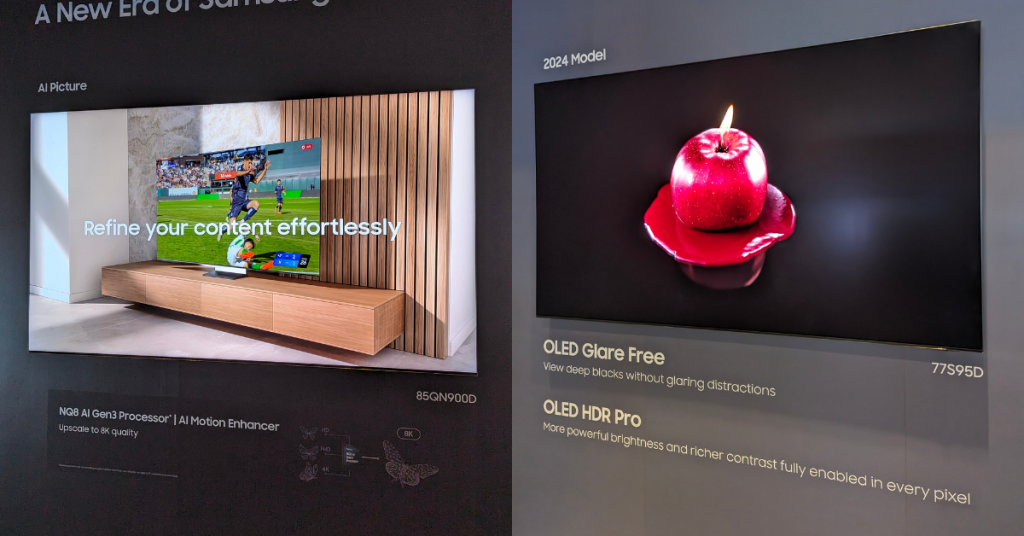
On the other hand, the Neo QLED 4K (price starts from RM8,299) is a less expensive screen inspired by the Neo QLED 8K. It comes in a wide range of sizes, from 55 inches to 98 inches.
It’s powered by the NQ4 AI Gen2 Processor which delivers 4K resolution with enhanced viewing experience through Samsung’s Real Depth Enhancer Pro and Quantum Matrix Technology. Combined, you’ll find better visual contrasts and a new standard (validated by Pantone) in colour accuracy.
The tech company also introduced its Glare-Free OLED (price starts from RM15,999) that eliminates unnecessary reflection while preserving deep blacks and clear images. This would suit those who don’t like to watch TV in the dark.
Optimising tech to elevate home sound systems
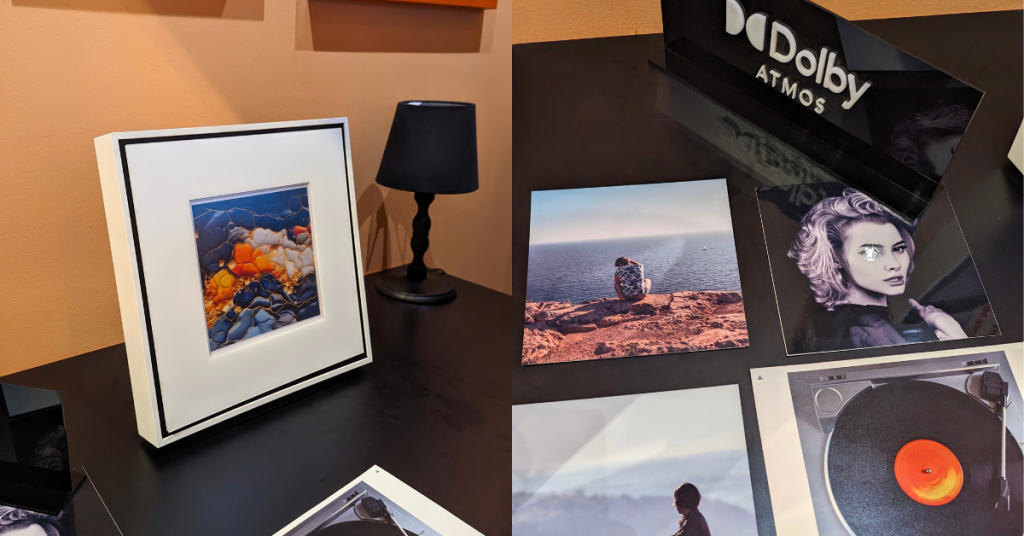
Visuals aside, the tech giant unveiled the all-new Music Frame (RM1,999) that’s inspired by another Samsung product called The Frame.
Much like its muse, the Music Frame is designed to look like a slim picture frame but has additional value-added features. You can use it to showcase personal photos or artworks set to audio. This is further enhanced by smart features like a built-in voice assistant.
Using Wi-Fi and Bluetooth, you’re able to stream music from your mobile device. A total of five devices can be connected to the Music Frame simultaneously. Its compact size is also quite deceiving as it’s able to deliver a rather powerful audio experience of 2.0ch and is supported by Dolby Atmos.
According to its press release, Samsung has spent over a decade investing into the build of intelligent features into its visual display products.
Denny Kim, President of Samsung Malaysia Electronics Sdn Bhd, shared, “Our 2024 screen line-up comes with on-device AI and intelligent integration across devices, allowing you to upscale your experience. With the latest Neo QLED 8K, Neo QLED 4K, and OLED TVs, we are bringing the future of AI power to life, for every Malaysian, in the comfort of their homes.”
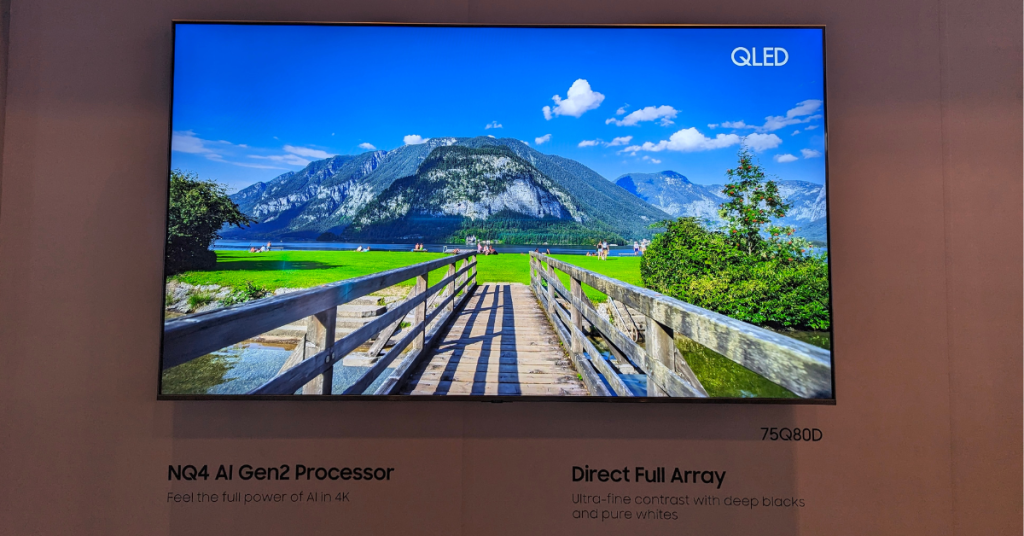
There’s an ongoing promotion from May 3, 2024 to June 30, 2024 in conjunction with this new launch. Customers who purchase these products are entitled to participate in its running contest, where you can stand the chance to win gifts like Samsung’s Galaxy S24.
Seeing as how AI continues to be a hot topic, it’s interesting to see how other tech giants in the market will follow suit in offering similar products.
Also Read: Airbot’s new self-cleaning robot vacuum boasts 3 promising features, we test each one out
Featured Image Credit: Vulcan Post
3 startups with different approaches to revolutionising Malaysia’s agriculture industry

It’s no surprise that agriculture is a huge industry in Malaysia. Contributing around 7.1% to the country’s GDP back in 2021, it’s undoubtedly a key part of our economy.
However, much of the industry has been largely left unchanged over decades. In order to stay ahead of the curve, there must be more innovative solutions from startups.
With that in mind, one of the panels at the recent KL20 Summit had been all about agritech. Here are three agritech startups that were highlighted, and how they’re solving the agriculture labour crunch in Malaysia.
BoomGrow: Anyone can farm
A homegrown startup, BoomGrow is rethinking farming through smart containerised farming systems. In these modular, plug-and-play systems, factors like water, light, and humidity can be adjusted to ensure the utmost consistency of output and yield.
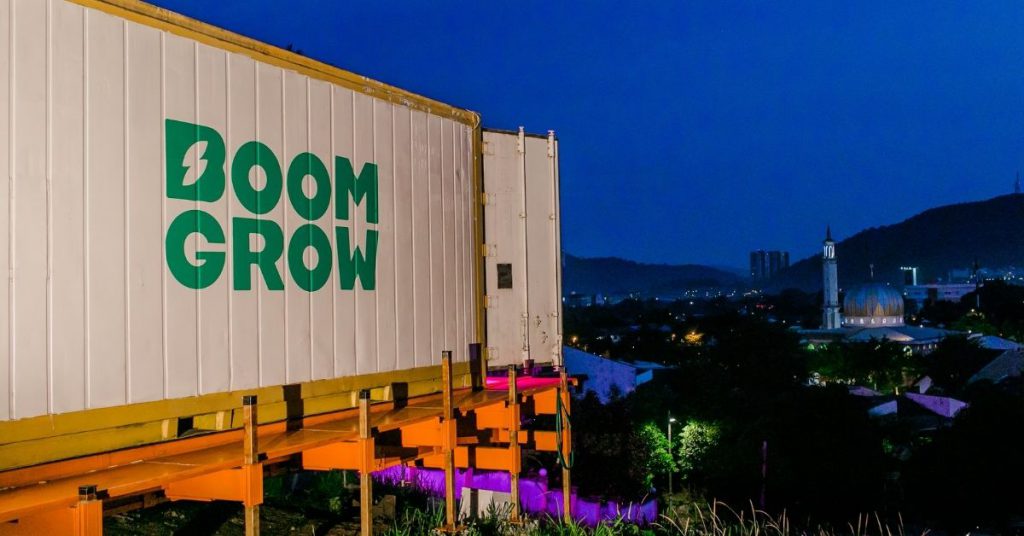
Essentially, they are removing unpredictability and uncertainty, and allowing for precision farming.
“We are stripping away the uncertainty in an industry that’s only been uncertain forever, that’s what technology has enabled us to do,” elaborated BoomGrow co-founder Jay Desan.
The startup is also all about being hyperlocal and putting their farms where consumers want and need them. The truth is, many of our foods need to travel hundreds if not thousands of kilometres just to get to us, resulting in lots of carbon emissions.
At the same time, BoomGrow’s farming system is highly cost-optimised, thus creating a financially and environmentally sustainable solution.
Wootzano: Automating farming
Based in the UK, Wootzano produces highly dexterous robots that can work like human beings in a production line.
These robotic arms can pick, sort, and grade produce while looking for issues, diseases, or other specifications.
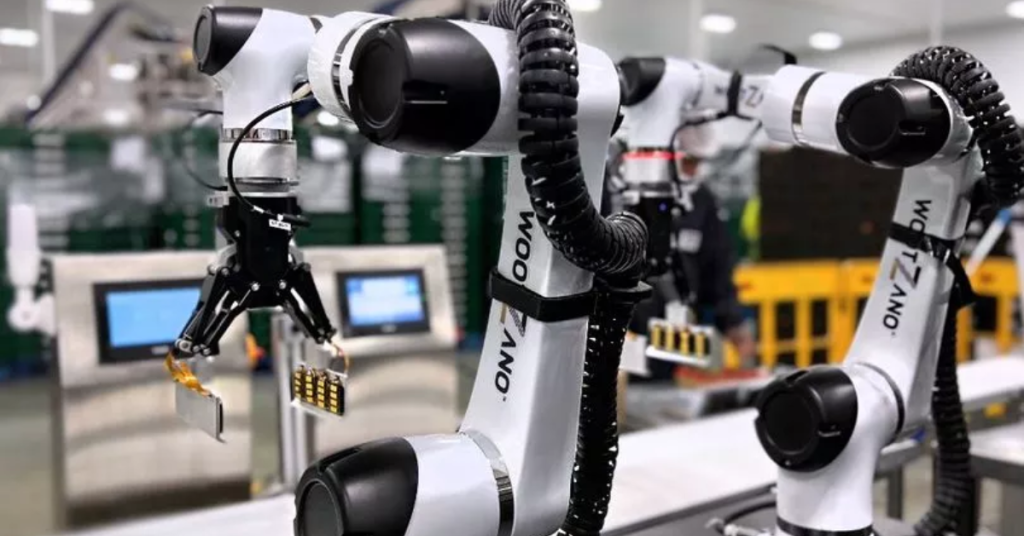
The company just recently ventured into Malaysia, which is the first Southeast Asian country they’re active in. Currently, the robots are already being deployed for bird’s eye chilis, a crop that CEO Atif Syed said is in dire need of automation.
“Labour is an issue everywhere,” he said. “Not just in developed nations. What was surprising to us was even in developing countries, labour has been quite hard to find. People are not willing to do the job, where these jobs can be very monotonous, mundane, repetitive.”
That’s why solutions like Wootzano’s are so vital. Not only do the speed of the robots match that of humans, they also have cost parity. That’s right, the pricing is actually equivalent to hiring a human being.
Qarbotech: Empowering farmers
Present on the panel was also Suraya Abdul Rashid, who invented a solution that is being sold by the company she founded, Qarbotech. She used quantum dot technology to create a solution that helps plants grow better.
In late 2023, the company received US$700,000 in seed funding and grants to scale. The round was led by 500 Global, while the grants came from the Singaporean government-linked Temasek Foundation, and Malaysia’s Khazanah Nasional.
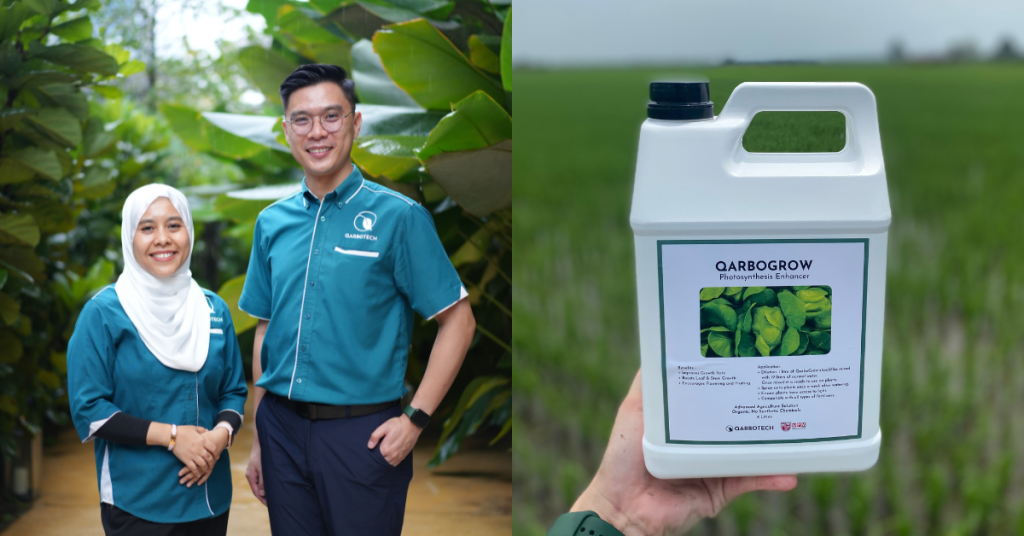
“Photosynthesis is an inefficient process,” she said. “Only 2% of light is being utilised during photosynthesis. So what we have is a photosynthesis enhancer.”
Essentially, Qarbotech’s solution helps plants absorb more light, hence increasing plant growth and yield.
While yield enhancers aren’t completely novel, Qarbotech’s solution puts smallholder farmers in the spotlight rather than sidelining them as it’s very easy to understand and implement.
As Suraya pointed out, in SEA, there are an estimated 100 million smallholder farmers. When they are exposed to climate crises such as prolonged monsoons and hot weather, they end up experiencing a huge drop in their productivity.
And that means, for the average farming family, less food on the table, and less money for education and health, trapping them in the poverty cycle.
Where we’re headed next
So, we’ve got three companies doing cool stuff in the agritech sphere. So what?
Obviously, there is much still to be done. Many more gaps can be filled in the market, as pointed out by another panellist, Singapore-based Tin Men Capital’s Murli Ravi.
He pointed out that the other panellists mainly focused on on-farm solutions that touch on life sciences, robotics, IoT, and the like. But he said there are lots of ways tech can be applied to pre and post-farm operations. We must look at the entire value chain, from supply to financing to retail.
One key thing he advised looking into as well is waste reduction.
“I think the world has enough crops to feed everybody, but we also know there are many people who are starving out there,” he said. “And the reason for that is not because we don’t have enough crops today. We don’t actually need to get more farms. We need to reduce wastage.”
But all in all, the panellists agreed that Southeast Asia is primed for lots of innovative growth when it comes to agritech, and Malaysia is of course at the centre of it all.
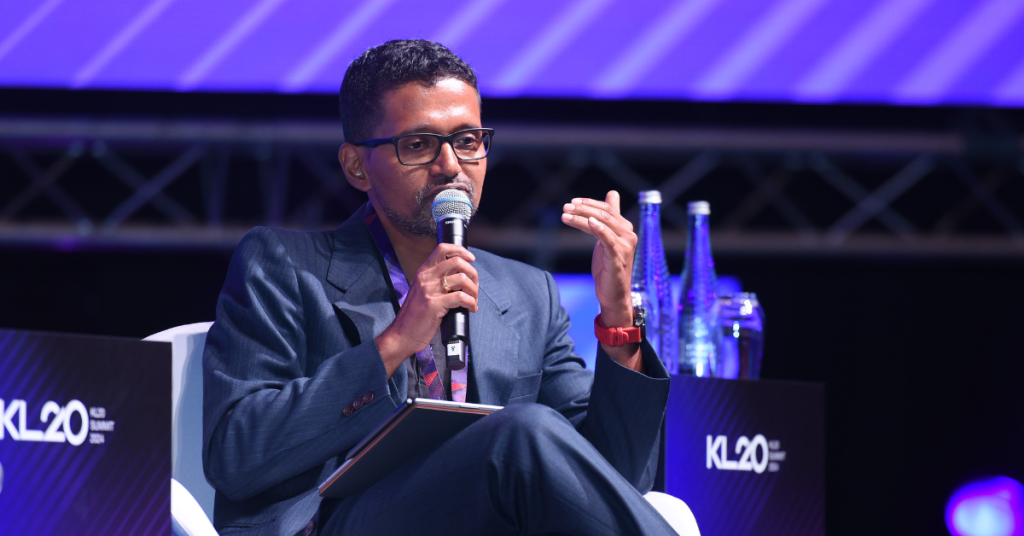
But to get us to the next chapter, there needs to be more integration and unity within the ecosystem.
Jay said that there is an “us versus them” sort of mentality within the industry, referring to startups and traditional businesses.
“Agritech, this whole tech thing, is seen as an external thing,” she said. “We need to be seen as integrated as one, solving a problem across the value chain. That kind of ecosystem is fundamental.”
Another player that must come in is the government. Atif said that the government must help to derisk agritech efforts in order to enable the integration of said technology.

“We actually have such few companies that have succeeded in agritech compared to fintech or ecommerce in this region particularly,” Jay said. “And it’s simply because technology has been seen as an add-on bling in a way.”
So many players in the industry from farmers to corporates still lack awareness and education for agritech solutions.
The harsh reality is that we need agritech, not just from an economic standpoint, but from a survival standpoint. Agritech is needed to tackle issues with food security and the climate. And as the industry comes together to solve those issues, Malaysia and the world will be all the better for it.
- Read other articles we’ve written about agritech here.
Also Read: 3 GenAI use cases with the potential to take off in M’sia, based on global examples
Featured Image Credit: Suraya Abdul Rashid / Atif Syed / Jay Desan
OpenAI just shook the world again launching ChatGPT that can see, hear & speak like a human

Little over 10 years ago Joaquin Phoenix fell in love with Scarlett Johansson’s voice, narrating an intelligent computer operating system in the 2013 film “Her”.
The widely acclaimed movie went on to win an Oscar and Golden Globe for the screenplay which, a little over a decade later, is becoming our reality thanks to the rapid development of AI.
Yesterday’s launch of GPT-4o (“oh”) by OpenAI, showcased through a live ChatGPT demonstration, was an experience straight out of a movie – one that blends sci-fi and romantic comedy, given the joyous, flirty female voice of the uncannily humanlike bot.
Just see and listen for yourself:
Besides narrating a story in different moods, ChatGPT can not only hear and respond like a human would (a feature more-less in existence ever since the dawn of however imperfect Siri) but also see what you show it with your phone camera or share on your screen through an app.
This includes viewing and identifying your surroundings, like demoed in this clip:
How about having it fill in to help your kid with their math homework? You can even ask it to guide them to the answer instead of providing it outright:
And this natural, live language translation is about to revolutionise our travel experiences:
For a finale, let’s take a look at an interaction both fascinating and worryingly creepy at the same time: two ChatGPT equipped devices interacting with each other, asking unprompted questions, exchanging information, as well as… singing:
I don’t know about you but this is giving me some 2001: Space Odyssey film vibes that one day we may accidentally build ourselves a Hal 9000 (and that that moment is very near):
Will smart machines ruin human relationships?
As impressive as GPT-4o’s capabilities are, coming soon to millions of users even in the free tier of ChatGPT, it does beg a question: will we be able to interact with each other after the experience with a faultless, intelligent, humanlike computer program?
That pleasant, joyful female voice that never gets angry and never says “no” alone may inspire spousal jealousy and ruin more than a few marriages (and we can expect a broader selection in the future, for both men and women).
I wouldn’t be surprised if domestic fights end up with each person shutting themselves with their loyal AI companions, telling them whatever they want to hear, making them feel right but creating an ever deeper rift between the living, breathing, human partner.
And ChatGPT may be better at explaining math to your kid but isn’t building a bond with your child more important? Where do we draw the line? How many — and which — humans will be replaced not only at our workplaces but in our families or among friends?
A clever machine, trained from the get go to learn and improve with time, will be able to get to know and accommodate you better than any human can. Why settle for less, then?
These are questions that have no answers today and yet we can’t slow technological progress down over emotional uncertainty. What is certain, however, is that we’re going to be questioning the nature of our own humanity even more every time another set of AI updates is announced again.
Especially as intelligent machines may behave more perfectly human than we do.
Featured Image Credit: TechCrunch
Also Read:
M’sia dreams of being a global hub for VCs by 2030, here’s how it’ll be made a reality
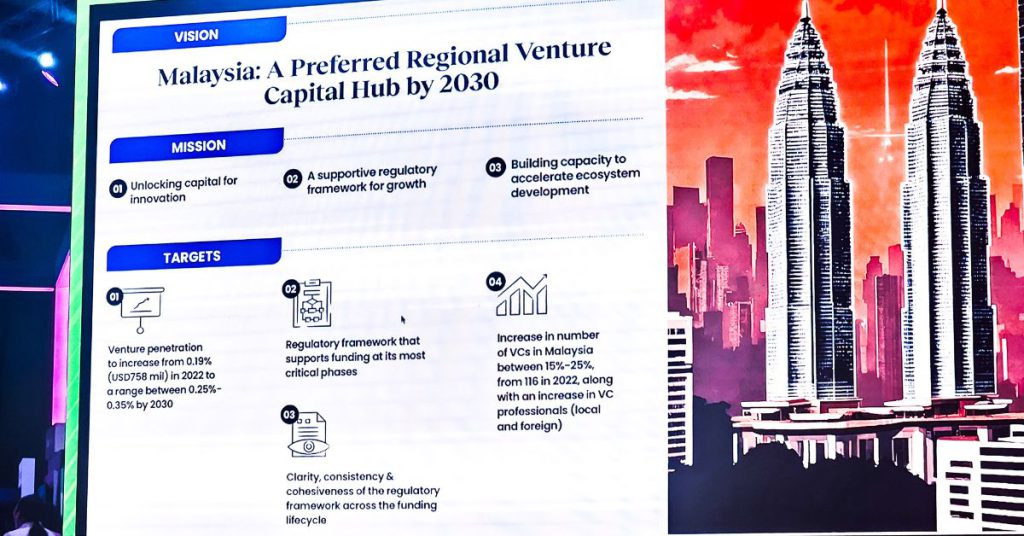
Venture capital (VC) has long been recognised as a cornerstone of innovation and economic growth, fostering the development of cutting-edge technologies and driving entrepreneurial endeavours.
With a bold vision to position itself as a premier regional VC hub by 2030, Malaysia is embarking on a transformative journey fueled by strategic interventions.
Here are three main initiatives the Malaysian government is implementing to make it easier for VCs to invest in our startups and stimulate economic growth, according to the Malaysia Venture Capital Roadmap.
Improving ease of doing business
Making business easier and more attractive is the name of the game, especially when it comes to moving money across borders.
To truly capture the attention of local and foreign investors, Malaysia is committed to streamlining the cross-border capital flow process. That means providing more information about where the money goes and setting clear rules for startups and investors to follow without too much fuss.

Besides that, we’ll have a centralised platform where all stakeholders involved in funding can converge to discuss opportunities and challenges.
This will not only save time but also ensure alignment among stakeholders. Plus, there will be dedicated folks to smooth out the relationship between startups and investors, akin to having a guide through the paperwork jungle.
In addition, Malaysia’s getting serious about making sure there is a conducive regulatory structure for VCs harmonising onshore and offshore legal structures. By sticking to global standards, Malaysia is showing it’s open for business to investors from all over.
And let’s not forget about increasing VC exit options. Making it easier for investors to cash out means more people joining the game.
Malaysia encourages market participation by offering more options like secondary sales and easing up on the requirements for getting listed.
Improving funding accessibility
To begin with, Malaysia has some funds we aim to invest, but we’re not randomly distributing them. We’re consolidating them into what’s known as a National Fund of Funds (FOF).
Employing a strategic allocation of government funds enables us to invest smarter, ensuring the money goes where it’s needed most without any waste.
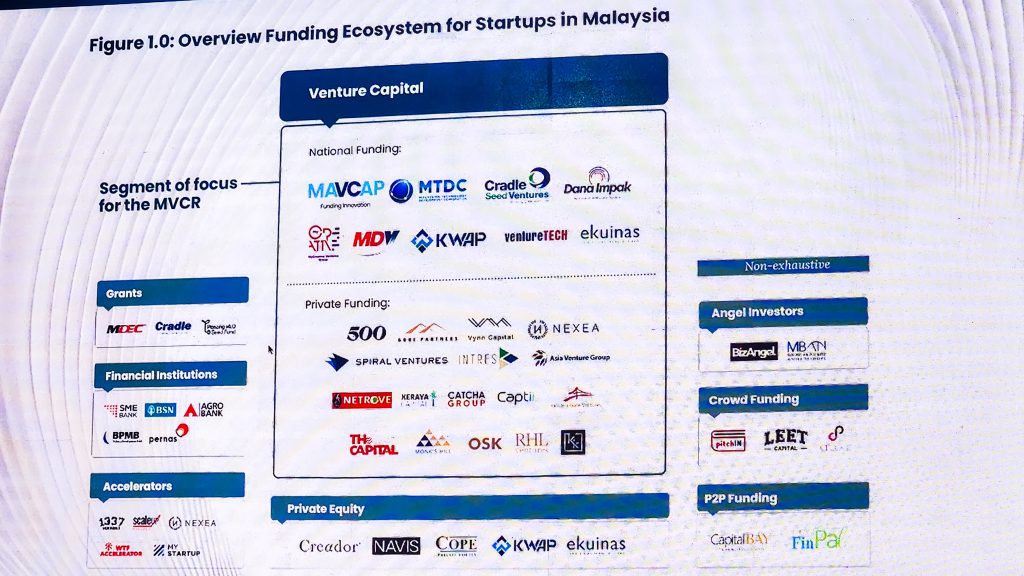
However, Malaysia isn’t stopping there. The nation is enhancing the attractiveness of matching FOF schemes by smoothing out how we hand out the money and making some clear rules for who gets what. The goal is to ensure that the funds generate the greatest impact and facilitate sustainable business growth.
Besides, increasing participation of government-linked investment companies (GLICs), government-linked companies (GLCs), and corporates further diversifies the funding pool.
By unlocking liquidity from GLICs, GLCs, and corporates through education, awareness programmes, and co-funding initiatives, Malaysia will stimulate greater participation within the VC ecosystem, reducing dependency on government funds.
Elevating Malaysia’s VC talent pool
No VC ecosystem can thrive without a skilled and knowledgeable talent pool. Malaysia’s roadmap addresses this by seeding new fund managers.
By nurturing local talent, fostering industry-academia collaborations, and providing avenues for international expertise, Malaysia aims to build a cadre of professionals capable of driving the country’s VC industry to new heights.
But we’re not just looking inwards—we’re also looking outwards. In a bid to attract top-tier VC talent from around the globe, Malaysia is enhancing its visa schemes.
Flexible eligibility criteria, accelerated processing timelines, and seamless collaboration among government agencies are making it easier than ever for skilled professionals to call Malaysia home.
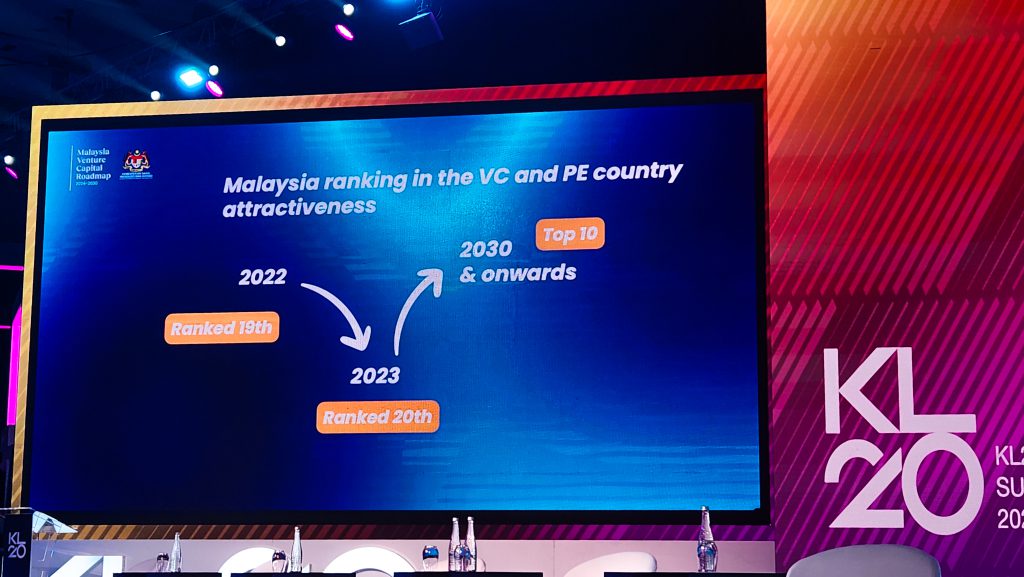
Moreover, the government is solidifying Malaysia’s position as a global VC hub and enriching its talent pool in the process by rolling out the red carpet for foreign VC talent.
Behind every successful VC firm is a dedicated team of support functions keeping the wheels turning. Recognising the importance of these unsung heroes, Malaysia is incentivising foreign VC support functions and upskilling local service providers.
Through tailored incentives, upskilling programmes, and collaborative initiatives, Malaysia is laying the groundwork for a self-sufficient VC ecosystem, fostering cooperation among key players and propelling the country to the forefront of the VC landscape.
If executed properly and with all these things in place, dare we say that the country could very well be on track to realise its vision of becoming a preferred regional VC hub by 2030.
- Learn more about Malaysia Venture Capital Roadmap here.
- Read other articles we’ve written about Malaysian startups here.
Also Read: Net zero explained: Why Amazon, Microsoft, & M’sia itself are pledging to be carbon neutral
Featured Image Credit: KL20 Summit 2024
Recognising the gap for kid-friendly beauty spas, this biz is now expanding beyond M’sia

Jac & Ivy isn’t just your average beauty retreat to get your nails done; it’s a whole experience.
Meet Ivy Chong, Jeremy Ong, and Jacqueline Ong, the dynamic trio behind this 11-year-old beauty haven.
But how did they turn a simple idea into a thriving business, spanning multiple outlets and even venturing into kids’ spa services?
Ivy, a certified nail aficionado with numerous victories in international competitions and a prestigious diploma from the Swiss Institute of CIDESCO (the world’s most internationally recognised beauty therapy qualification), laid the foundation with her relentless pursuit of perfection and deep passion for nails.
Jacqueline, a former Miss Malaysia World runner-up and adept entrepreneur, brought her unique flair for fashion and adventure, while Jeremy, Ivy’s husband, contributed his financial acumen and entrepreneurial drive.
Together, this trio embarked on a journey to transform a simple idea into a beauty empire and soon realised that they were onto something special. Thus, Jac & Ivy was born.
But as fate would have it, Jacqueline’s journey took her to Hong Kong, leaving Ivy and Jeremy to steer the ship.
Undeterred, the duo pressed on, fueled by a shared vision and a determination to succeed. With Jeremy’s corporate background and Ivy’s unwavering commitment to excellence, they were a force to be reckoned with.
A beauty playground for tiny fingers
The turning point came when they noticed a gap in the market—a lack of safe and enjoyable nail care options for children.
Inspired by their daughter, they established Jac & Ivy Kidz Spa, Malaysia’s first dedicated nail spa for kids.

This venture, rooted in their commitment to safety and exceptional experiences, quickly became a cornerstone of Jac & Ivy’s business model.
With meticulously selected non-toxic products and specialised staff training, the spa ensures every child’s visit is both pampering and memorable.
They craft every detail, from child-sized chairs to mini juice boxes, to make children feel special and engaged.
Their services cater to the entire family, fostering inclusivity and enjoyment across all age groups and preferences. From kids’ parties to corporate events, Jac & Ivy offers something for everyone.
It’s not uncommon to see parents bonding with their little ones over a manicure or pedicure session, creating cherished family memories.
The positive response to Jac & Ivy’s Kidz Spa has fueled the company’s growth.
They’ve already established four outlets in Malaysia—Hartamas, Taman Molek, Ativo Sri Damansara, and KidZania Mutiara Damansara. Plans for expansion include a forthcoming location at KidZania Singapore.

What sets them apart
Over the years, the nail care industry in Malaysia has undergone significant transformations. While an influx of small-scale manicurists and home-based setups has emerged, many tend to lean heavily into the realm of nail art.
However, Jac & Ivy stand out from the crowd by prioritising health and hygiene while fostering a welcoming, family-friendly environment.
Amidst a sea of competitors, they focus on creating a space where families can bond and relax together during pampering sessions sets them apart.

Their diverse clientele ranges from males seeking pristine nails to individuals craving a serene ambience or privacy during treatments.
Despite the fierce competition, they continuously adjust their offerings to meet evolving customer preferences.
Introducing the Jac & Ivy Kidz Spa, with specialised services tailored for children, showcases their commitment to innovation and brand diversity, positioning them as Malaysia’s first dedicated nail spa for kids.
Operating with two distinct pipelines—one catering to adults under the Jac & Ivy brand and the other to children through the Jac & Ivy Kidz Spa—further broadens their reach and appeal.
Additionally, maintaining open communication with customers and active solicitation of feedback enables Jac & Ivy to innovate continually, fostering loyalty and driving repeat business.
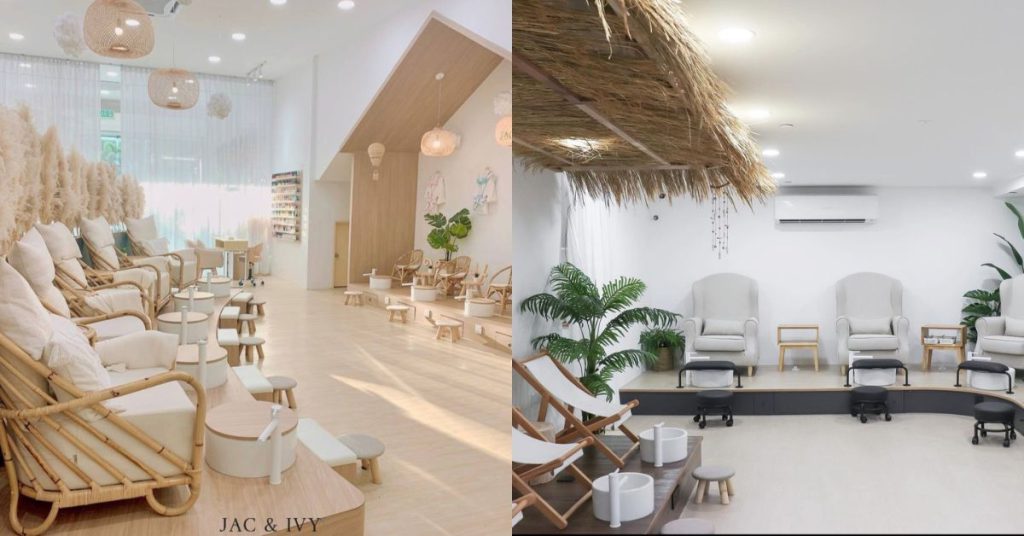
Navigating challenges & growth
It goes without saying that Jac & Ivy wouldn’t be 11 years old if it weren’t for the duo’s resilience and determination.
For example, amidst challenges like the COVID-19 pandemic, they adapted and invested in new product lines and expansion plans, constantly evolving to stay ahead in the dynamic beauty industry.
“Even during the pandemic when the store had to be closed, we pivoted to online sales with the products we had in hand to keep a driving income for the company,” they said.
A key to their enduring success lies in thorough market research and product sourcing, especially evident in the establishment of Jac & Ivy Kidz Spa.

Extensive research trips abroad ensured safe yet innovative products aligned with the spa’s focus on health and hygiene.
Despite initial investment hurdles, their commitment to providing tailored experiences for young guests drove forward-thinking initiatives, such as mini product lines and specialised amenities.
Looking ahead to the long term, Jac & Ivy sets its sights on expanding in prime locations within Malaysia’s middle-class areas, including Bangsar and Damansara, among others.
Poised to take Jac & Ivy to new heights, they also dream of expanding into new markets and launching their own nail training school.
With their passion, expertise, and unwavering dedication to customer satisfaction, they’re prepared to leave you feeling like royalty—whether you’re six or sixty.
- You can learn more about their business here.
- Read other articles we’ve written about Malaysian startups here.
Also Read: 3 GenAI use cases with the potential to take off in M’sia, based on global examples
Featured Image Credit: Jac & Ivy Nail Spa

